Much of May has been cold, and this followed a remarkably cold April. The legacy is plant growth a long way behind what one expects at this time. May’s final five days have been warmer, afternoons averaging over 20C/68F. I picked as much asparagus in those days as in the whole month previously. I am finishing this piece on 31st May and just at dawn I can look out of the window and see the hedgerows dripping with hawthorn blossom. It really is such a lovely time of year. Today is forecast 24C/75F, and I have some watering to do, flowers and beans to transplant, lettuce to sow.
May was wet as well as cold, with 112mm/4.5in rain. I often wonder what it would be like to manage this small market garden, if I was digging and rotavating. I look at the dusty or muddy, weedy surface of my dig bed and it frightens me! Soon I hope to have some data about its soil, compared to the adjacent no dig bed. Early indications from Jane, a scientist doing regular measurements, suggest the no dig bed has a lot more carbon in the soil compared to the dig bed, from the same amounts of compost added to each.
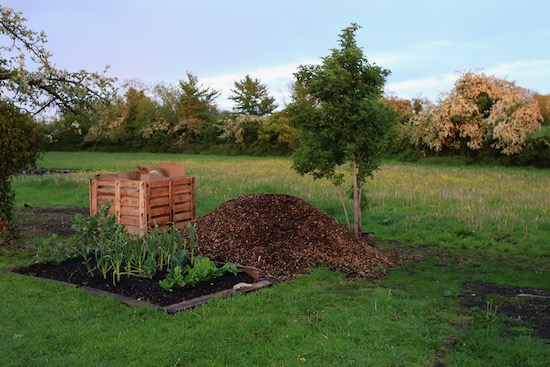


Springs compared
The first two photos below are 19th and 30th May. You can see new plantings of calabrese broccoli on the left of each photo, and to the right are broad bean plants. Neither are anywhere near harvest stage even now, not to mention carrots and beetroot still being very small. The third photo is 2nd June last year!
2020 was a warm spring, so it’s not a totally fair comparison. I have found over the years however, that one tends to always be looking back one year, as a kind of measuring stick. Just now, it’s painful.
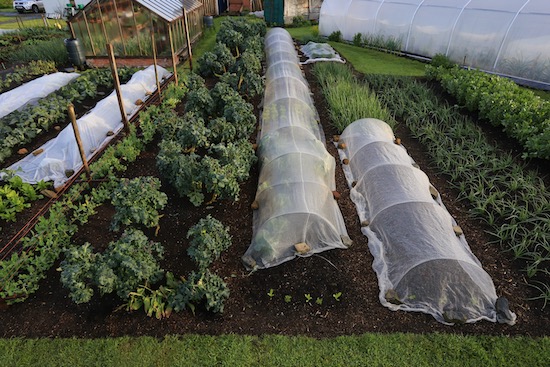
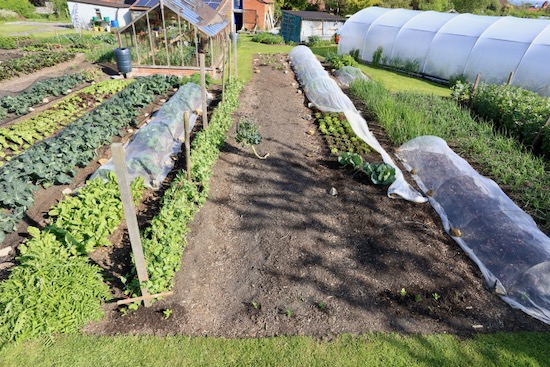

Under cover plantings
I hope that most of you have now managed to plant up your covered spaces, with no more threat of any frosts, except in parts of Canada! I am noticing that cucumbers I’ve planted two days ago look much healthier than ones planted 12 days ago, when it was much cooler.
The greenhouse is noticeably warmer than the polytunnel, and plants in there look stronger, especially aubergines and melons which crave warmth. In both places we shall soon harvest the garlic, around 12th June. Outdoors will be late June for garlic harvest.
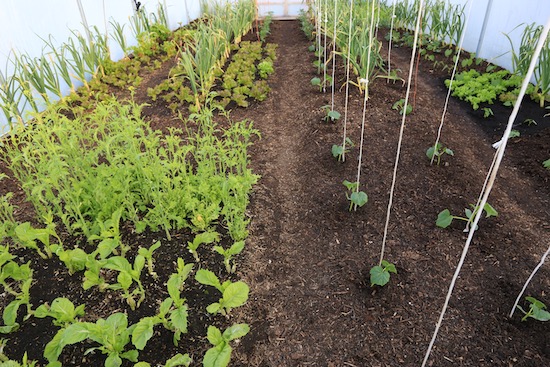
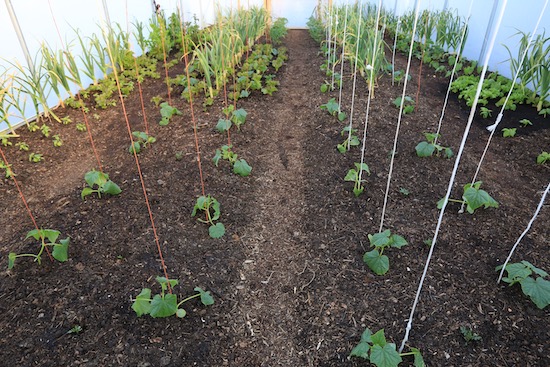
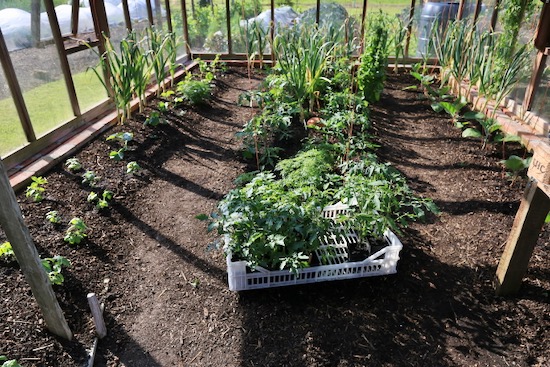
Sowing methods, and varieties
Sowings now include swedes/rutabaga, carrots, beetroot for winter, lettuce, celery, cabbage, broccoli for autumn and spring (two different types – see my latest video on spring broccoli), and French plus climbing beans.
The most reliable way to sow all of this is undercover, and my latest online course 3 has a lot of details about this, for each vegetable.
Then even when you have your seeds and trays and decent compost, things can go wrong! It turns out that my Czar runner beans which I harvested last October, were not quite mature due to the damp autumn weather and a forced early harvest. The result is zero emergence from resowing them, compared to 100% germination of the borlotti beans.

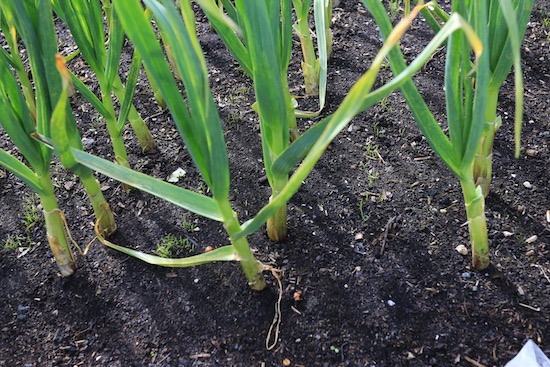

Compost quality
The best source of compost is what you can make. Scrounge as much material as you can, especially at this time of year when there is a lot of grass and weeds, especially in rural areas. Many of you will not have access to such riches and you then need to buy compost.
Problem is that bought composts may contain unwanted ingredients, and most of you will know about the persistent pyralid weedkillers, which just don’t go away. The photo shows evidence of it in purchased green waste and mushroom compost I have been using in the new area. It looks a low-level contamination, which I suspect may be the case in many purchased composts. I just replied to a follower on FB who has it in 30 tons (!) of manure, and is being visited by Corteva.
I have sent emails galore to Corteva & others, who visited here but fobbed me off, as they do others. They blame no dig (!!!) and tell people to rotovate and dig in the manure. Their horrible poison is indeed ‘dissipated’ by soil microbes, and this works when it’s left on the surface, with the microbes undisturbed below, able to move up into it. They have even been offering people money in compensation, but one man they did not pay and he is taking them to court. Another they offered money on condition he said no more on social media. See Growth Collective on Twitter.


New land
I apologise if sometimes I make it look too easy to grow vegetables. I know from experience that it’s not.
This spring the happenings in my new land beyond the existing garden, are a reminder of many difficulties. In no particular order we have a lot of rabbits, bindweed, and dandelion seeds. Plus I am still worried about the compost and whether, or rather how much it is contaminated by pyralid weedkiller.
Apart from one trial bed, there are no wooden sides on this plot. This video has more about that.
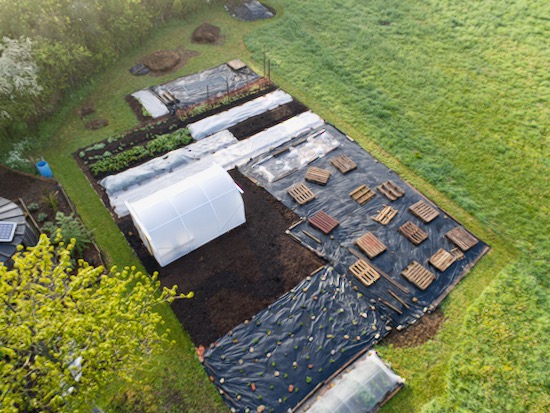

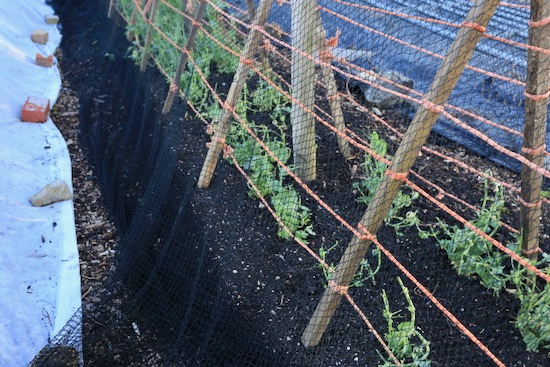
New polytunnel
My aim with the new tunnel from First Tunnels, is to use it for mixed planting. It’s 10 x 15′ and has a small propagating bench. The foundation tubes have foot square anchor plates in a foot-deep hole in the ground and the sliding doors are excellent. Rabbits like to run around it!
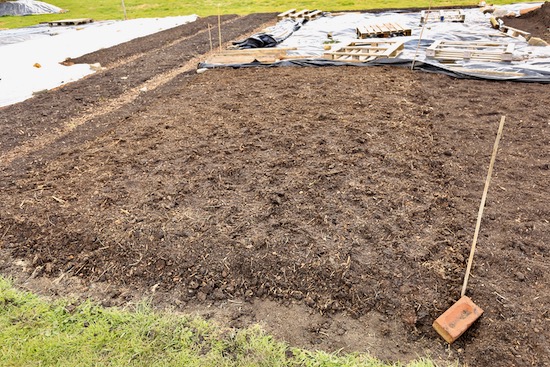
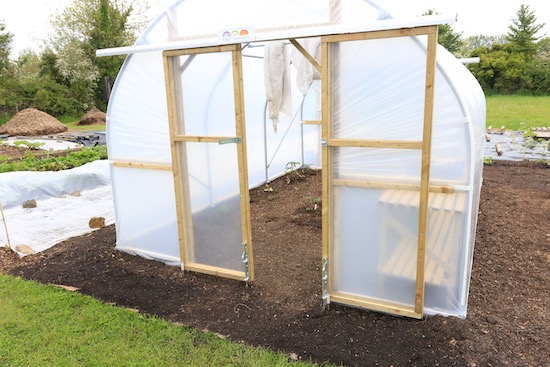
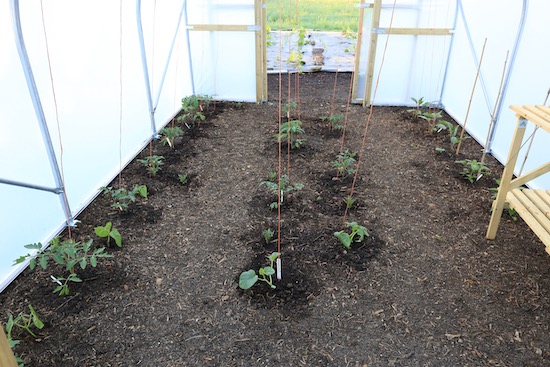
Events!
Yes there are some, what a relief. First up, there is an afternoon visit here Sunday 6th June, with the Biodynamic Association. Tickets are available to all, you don’t need to be a biodynamic gardener. There will be interesting people here!
I am speaking at Groundswell no till farming conference in Hertfordshire, north of London, on 24th June. The event is huge and runs for three days from the 22nd. The roster of speakers is truly amazing and I feel honoured to be among them. It’s all about soil quality, low input farming and healthy food.
My next no dig talk is at Charleston garden festival in Sussex on 1st July, 3pm. A very different setting to the Cherrys’ farm! Sorry just saw when getting the link that it’s fully booked.
Jekka McVicar, the one and only, is holding a Herbfest at her farm near Bristol in early July. I am there Saturday 3rd, shall give a no dig talk. Looks a good day with interesting people and lots to see. Jekka will also be here on 15th June making a video with us about Homeacres herb garden.
It’s RHS Hampton Court, 6th-11th July, more details next time.
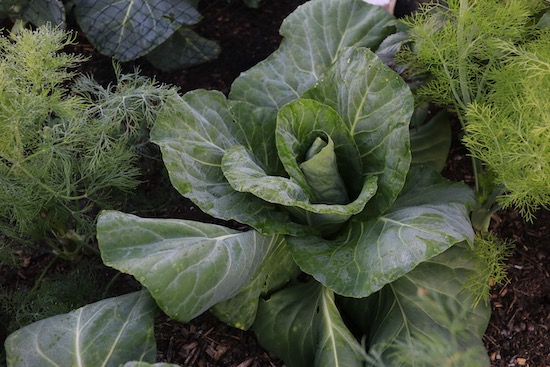

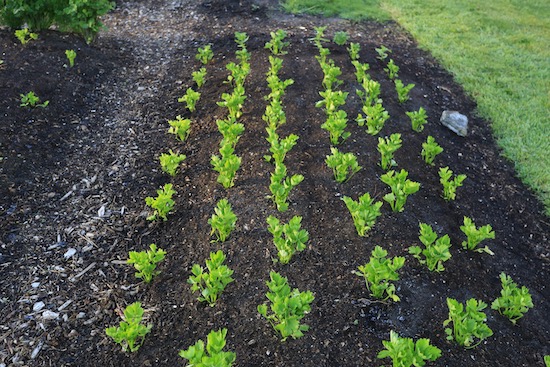








































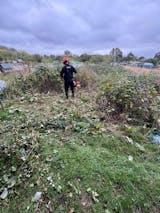
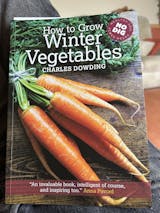


0 comments